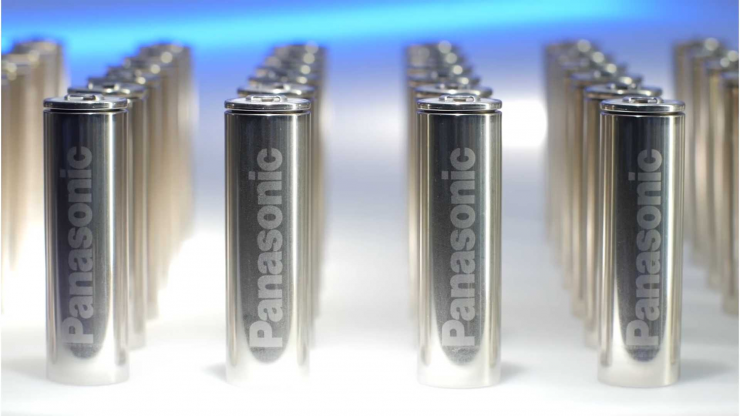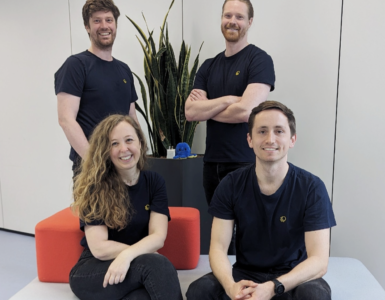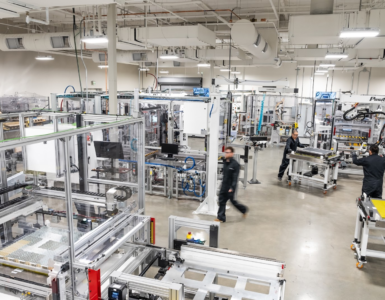Panasonic profits increase helped by Tesla Gigafactory batteries.
Panasonic expects net profit to increase 27% in the current business year, ending March 2022, as the 103-year-old electronics company aims to put years of restructuring behind it and go on the offensive by focusing on business customers.
President Kazuhiro Tsuga in an online news conference:
We are looking to move to the stage of going on the offensive by completing all the necessary restructuring steps.
Net profit for the year is projected at 210 billion yen ($1.9 billion), and operating profit is expected to grow 28% to 330 billion yen. Sales are projected at 7 trillion yen, up 4.5%.
🔥 What about we co-host a webinar? Let's educate, captivate, and convert the battery economy!
Batteries News is the global go-to online magazine for the battery industry, we can help you host impactful webinars that become a global reference on your topic and are an evergreen source of leads. Click here to request more details
The forecasts are somewhat conservative and reflect the uncertainties surrounding the economy. Semiconductor shortages are affecting automakers, key customers of Panasonic, while spikes in the prices of commodities such as copper are squeezing margins.
The coronavirus pandemic has forced some businesses, such as retailers and restaurants, to postpone investment in refrigeration equipment — a primary product for Panasonic.
The Osaka-based company says it is redoubling its cost-cutting efforts and restructuring measures to secure a profit increase.
READ the latest Batteries News shaping the battery market
The anticipated rebound comes amid news that Panasonic is looking to exit production of low- and mid-end TVs to focus on the high-end segment with products such as OLED TVs.
Panasonic ranked No. 3 in OLED TV production in 2020, according to market research company Euromonitor. But in overall TV production, it trailed behind Chinese and South Korean rivals such as Samsung, LG and TCL.
Panasonic has been looking for a company to outsource its low- and mid-end TV production to. Nikkei reported last month that the company is negotiating with China’s TCL, the world’s third-largest TV maker. Panasonic says nothing has been decided on yet.
Chief Financial Officer Hirokazu Umeda said Panasonic will consolidate TV production in four locations — Malaysia, Taiwan, the Czech Republic and Brazil — and end production in Japan, India and Vietnam.
The restructuring of the TV business, despite its turning profitable in the last fiscal year, signifies the appliance maker’s departure from its traditional electronics business centered around TVs.
Panasonic’s focus on profitability over market share also follows the announcement of the $7.1 billion acquisition of Blue Yonder, a U.S. maker of supply chain software, on April 23.
The company’s biggest acquisition in a decade is part of its goal to move away from traditional manufacturing — TVs, LCD panels, semiconductors — to the new segment of providing business solutions to corporate customers such as retailers and automakers, Panasonic has said.
The push into the new area is led by fresh CEO Yuki Kusumi, former head of the company’s automotive business. Kusumi took office on April 1 and is expected to assume the position of president after the June shareholders meeting.
In the year that ended in March, Panasonic reported a net profit of 165 billion yen, down 27%. Operating profit dropped 12% on sales of 6.7 trillion yen, down 11%.
Under the previous CEO, Tsuga, Panasonic focused on restructuring after reporting losses in excess of $7 billion for two years straight in fiscal 2011 and 2012.
The company has quit unprofitable businesses, including production of solar panels, semiconductors, plasma TV displays and LCD panels.
A battery-producing Gigafactory joint venture with Tesla also has turned profitable on an annual basis for the first time since production started in 2017.
Last year, Panasonic agreed to invest to expand battery production at the factory in Nevada, but it is avoiding head-on competition with rivals CATL of China and LG Chem of South Korea, focusing on partnerships instead of taking on big investment risks.
Panasonic CFO Umeda said the Gigafactory will generate a profit of some 20 billion yen in the current business year.
Panasonic is also racing ahead with the development of a new battery cell, code-named “4680,” that Tesla unveiled last year and is hoped will increase the range of Tesla electric vehicles and make them more affordable. One of the challenges has been to achieve an appropriate safety level.
Umeda said that development is making steady progress and that the company plans to conduct safety and performance tests on the 4680 cell “in an early part of fiscal 2021.”
Panasonic accelerates shift to corporate business solutions, Tokyo, May 10, 2021








